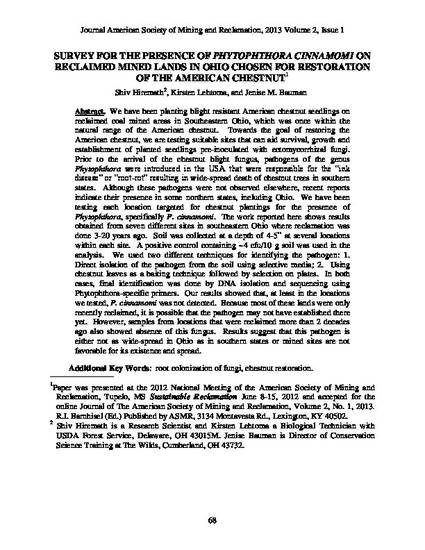
- Root colonization of fungi,
- Chestnut restoration
We have been planting blight resistant American chestnut seedlings on reclaimed coal mined areas in Southeastern Ohio, which was once within the natural range of the American chestnut. Towards the goal of restoring the American chestnut, we are testing suitable sites that can aid survival, growth and establishment of planted seedlings pre-inoculated with ectomycorrhizal fungi. Prior to the arrival of the chestnut blight fungus, pathogens of the genus Phytophthora were introduced in the USA that were responsible for the “ink disease” or “root-rot” resulting in wide-spread death of chestnut trees in southern states. Although these pathogens were not observed elsewhere, recent reports indicate their presence in some northern states, including Ohio. We have been testing each location targeted for chestnut plantings for the presence of Phytophthora, specifically P. cinnamomi. The work reported here shows results obtained from seven different sites in southeastern Ohio where reclamation was done 3-20 years ago. Soil was collected at a depth of 4-5” at several locations within each site. A positive control containing ~4 cfu/10 g soil was used in the analysis. We used two different techniques for identifying the pathogen: 1. Direct isolation of the pathogen from the soil using selective media; 2. Using chestnut leaves as a baiting technique followed by selection on plates. In both cases, final identification was done by DNA isolation and sequencing using Phytophthora-specific primers. Our results showed that, at least in the locations we tested, P. cinnamomi was not detected. Because most of these lands were only recently reclaimed, it is possible that the pathogen may not have established there yet. However, samples from locations that were reclaimed more than 2 decades ago also showed absence of this fungus. Results suggest that this pathogen is either not as wide-spread in Ohio as in southern states or mined sites are not favorable for its existence and spread.
Available at: http://works.bepress.com/jenise_bauman/12/
